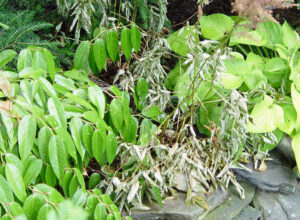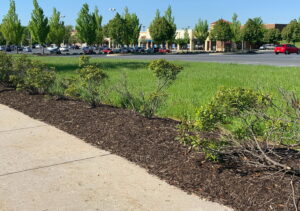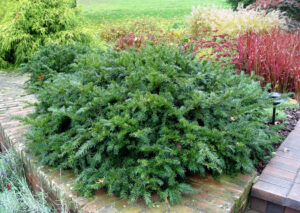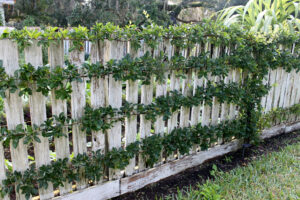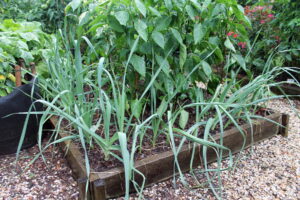Putter Time
July 16th, 2024
It might be hot and dry, but we’re now nestled in that easy-going time frame of the gardening year that I like to call “putter time.” 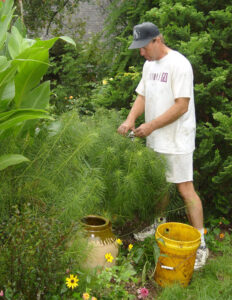
It’s a period of relative calm wedged between the two seasons of soil-jockey fury – spring (when it seems like everything needs to be done all at once), and fall (when picking up after this season and setting the stage for next join forces).
I like putter time because there’s no pressure to work through a lengthy to-do list before bad weather hits, ideal timing runs out, or the whole thing threatens to cross the line from “busy” to “overwhelming.”
Summer is a time when the pace is more meander than sprint and when there’s leeway to stop, sniff, ponder, enjoy the blooms, and basically put off until tomorrow any noticed jobs… if you feel like it.
Summer’s jobs are a lot lighter than spring or fall, too.
Especially in May, the work includes heavy-duty mulching, exhaustive trimming and pruning of bushes and hedges, and the back-bending jobs of cutting spring-bulb foliage followed by planting and transplanting annuals, perennials, and shrubs.
Come fall, it’s time to yank and haul the season’s spent plants, move those falling leaves where they’re piling up, and whip the lawn back into shape (which one year for me meant replacing the whole drought-killed front yard).
But in summer, the jobs are mostly lighter, easier things like watering, snipping a few wayward branches here and there, yelling at the deer and rabbits, and cutting the grass (or not, when it’s so dry that the grass is turning brown).
My summertime putter days largely consist of patrolling the yard with a five-gallon bucket in hand, ready to pluck out any weeds just getting started. I look at it as “harvesting compost.”
With this kind of regular, slow-paced policing, I have virtually no weed trouble. Colonies never have a chance to develop, and I deny all weeds the chance to flower, set seed, and create tomorrow’s outbreaks.
My weeding “tools” are mainly my index finger and thumb rather than hoes or a tank sprayer of Roundup.
It’s only when ground is left bare and ignored that weeds have a chance to turn into the botanical monsters that they can be. I’ve had to tackle that, too (after inheriting others’ yards), and I can tell you that leisurely but regular putter patrols are a whole lot better way to go.
My summer putter days also sometimes involve a little fertilizing of the veggies and potted flowers, some dead-heading and neatening of flowers, and occasionally some action to head off a particularly damaging scenario involving bugs or disease.
But the thing I like most about summer putter days is that they give me an excuse to get out there and really enjoy the gardens up close and personal. They give the illusion that I’m out there “working” when I’m really just soaking up the setting.








